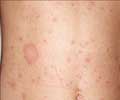Highlights
- Skin is prone to damage by a number of environmental factors including exposure to harmful ultraviolet and infrared radiations from the sun that can increase the risk of skin cancer and contribute to skin aging.
- Recent findings reveal that tanning from the sun or indoors, contribute to major skin damage in the long run.
- Wrinkles and sagging skin are two significant repercussions of tanning.
The ultraviolet radiation from the sun and indoor tanning beds tend to increase the risk of skin cancer and also contribute to skin aging.
The statement further read, "Moreover, other forms of radiation, such as heat and visible light, can negatively impact the skin, as can pollution, so protecting your skin from the environment can benefit both your health and appearance."
Researchers said that habitual exposure to ultraviolet rays could cause blood vessels to become more prominent, causing skin redness, while visible light and pollution could cause uneven skin tone, especially in darker skin types.
Short wave ultraviolet B (UVB) rays are known to cause sunburns and uneven pigmentation and long wave ultraviolet A (UVA) and infrared radiation penetrate deeper into the skin damaging the existing collagen and reduce collagen production, resulting in wrinkles and sagging skin.
The researchers asserted the significance of an apt sunblock cream since both kinds of Ultra Violet rays- UVA and UVB-can be equally damaging to the skin.
"Since both types of ultraviolet (UV) rays can damage the skin, it is important to use a broad-spectrum sunscreen that provides both long wave ultraviolet A and short wave ultraviolet B protection, with an SPF of 30 or higher" Kourosh said.
Source-Medindia
















